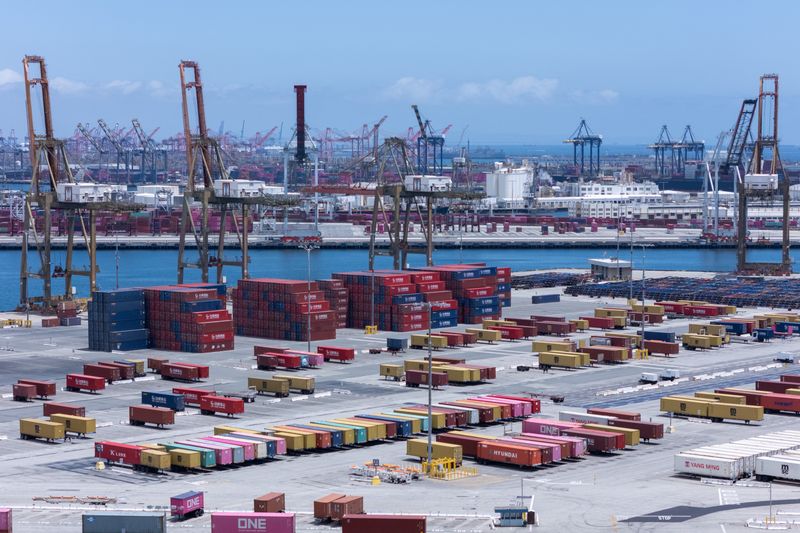Trump Imposes 25% Tariffs on Japan and South Korea in Trade War Letters

U.S. Tariff Hikes Spark Global Tensions and Market Volatility
U.S. President Donald Trump has initiated a new phase in the ongoing trade war by informing key trade partners that significantly higher tariffs will come into effect on August 1. This move affects major suppliers like Japan and South Korea, as well as smaller nations such as Serbia, Thailand, and Tunisia. The announcement has sent ripples through global markets, with Wall Street reacting sharply to the news, while Asian markets have shown more resilience.
The U.S. has sent letters to 14 countries, outlining potential negotiations while also warning of retaliatory measures if any nation raises its own tariffs. In his messages, Trump emphasized that any increase in tariffs from other countries would be matched by an equivalent rise in U.S. tariffs. This approach underscores the administration's strategy of using leverage to negotiate favorable terms.
The new tariffs will take effect on August 1 and will not be combined with existing sector-specific tariffs, such as those on automobiles, steel, and aluminum. For example, Japanese vehicle tariffs will remain at 25%, rather than increasing to 50% as some previous tariff hikes have done. This distinction is significant for international trade relations and could impact how countries approach negotiations.
Countries are under pressure to finalize deals with the U.S., as Trump's trade policies have created uncertainty and disrupted financial markets. The president extended the deadline for negotiations to August 1, giving trading partners a reprieve. However, he indicated that the deadline is firm but not absolute, suggesting openness to alternative arrangements if requested.
So far, only two agreements have been reached: with Britain and Vietnam, while the U.S. and China have agreed on a framework for tariff rates. Wendy Cutler, vice president of the Asia Society Policy Institute, expressed hope that negotiations could still yield positive outcomes despite the current challenges.
Trump has set different tariff rates for various countries. For instance, the rate for Tunisia, Malaysia, and Kazakhstan is 25%, while South Africa, Bosnia and Herzegovina face a 30% tariff. Indonesia faces a 32% rate, and countries like Serbia and Bangladesh face a 35% tariff. Cambodia and Thailand face a 36% rate, and Laos and Myanmar face a 40% tariff.
Japanese Prime Minister Shigeru Ishiba mentioned that progress has been made in discussions to avoid higher tariffs. He noted that the U.S. has proposed accelerating negotiations ahead of the August 1 deadline, with the possibility of revising the letter based on Japan’s response. Similarly, South Korea plans to intensify trade talks, viewing Trump's latest plan as an extension of the grace period for implementing reciprocal tariffs.
South African President Cyril Ramaphosa criticized the 30% U.S. tariff rate, arguing it is unjustified given that 77% of U.S. goods enter South Africa without tariffs. His government remains committed to engaging with the U.S. on this issue.
Market Reactions and Economic Concerns
The announcement of higher tariffs has led to a drop in U.S. stock markets, reflecting the ongoing volatility caused by Trump's trade policies. The S&P 500 closed down about 0.8%, with U.S.-listed shares of Japanese automotive companies falling significantly. Toyota Motor dropped 4%, and Honda Motor fell by 3.9%. The dollar surged against both the Japanese yen and the South Korean won, highlighting the broader economic implications.
Brian Jacobsen, chief economist at Annex Wealth Management, commented that "tariff talk has sucked the wind out of the sails of the market." He noted that most announced tariff rates have been rounded down, and the letters appear to be "take it or leave it" offers. U.S. Treasury Secretary Scott Bessent mentioned that several trade announcements are expected in the next 48 hours, with many countries submitting last-ditch offers.
Trade Blocs and International Relations
The European Union has not received a letter setting out higher tariffs, according to EU sources. The EU aims to reach a trade deal by Wednesday after a positive exchange between European Commission President Ursula von der Leyen and Trump. However, the EU faces internal divisions over whether to pursue a quick, light trade deal or use its economic power to negotiate better terms.
Trump has also threatened leaders of developing nations in the BRICS group, which includes Brazil, Russia, India, and China, with an additional 10% tariff if they adopt "anti-American" policies. This move highlights the complex web of international trade relations and the potential consequences of geopolitical tensions.
Post a Comment for "Trump Imposes 25% Tariffs on Japan and South Korea in Trade War Letters"
Post a Comment